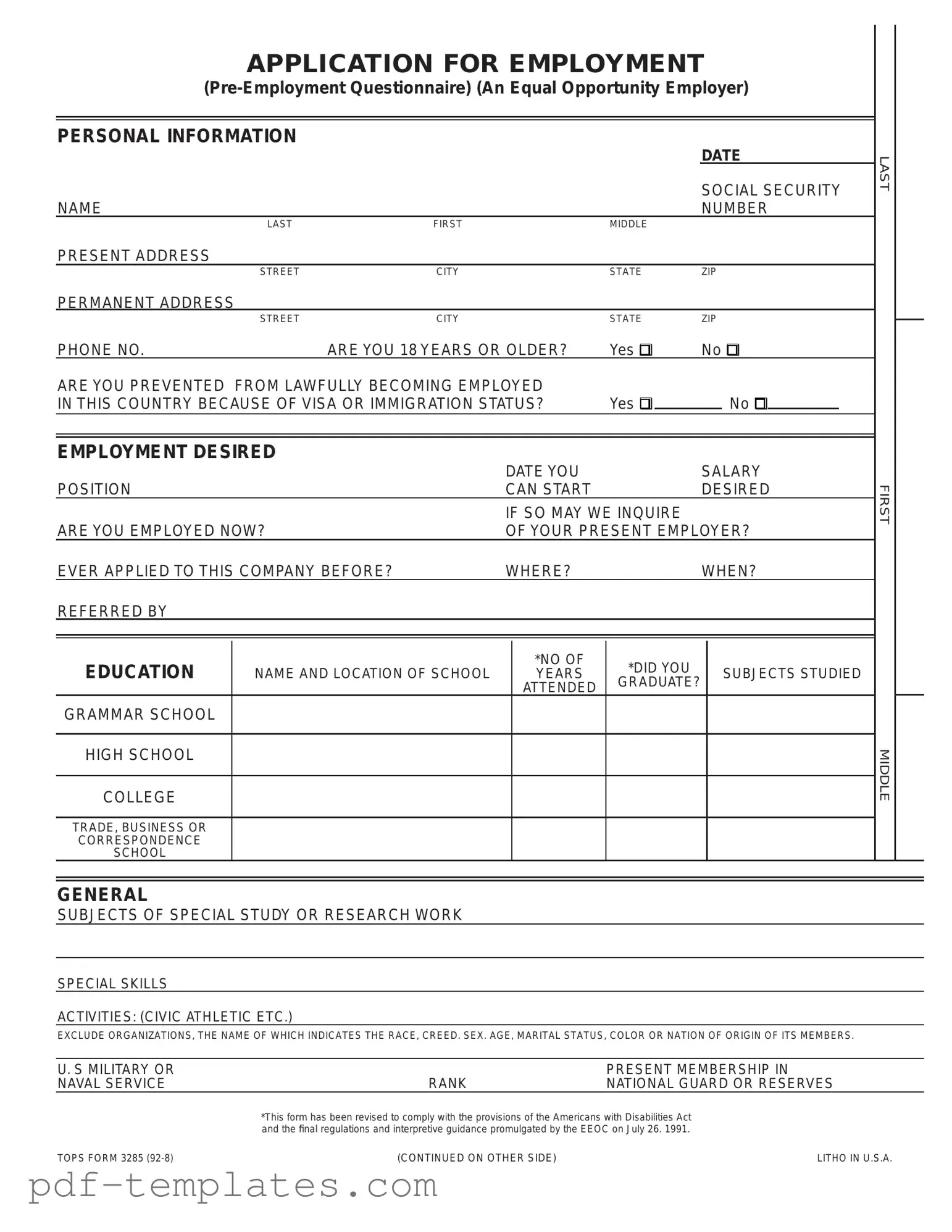The resume is one of the most common documents similar to the Employment Application PDF form. Both serve as a means for job seekers to present their qualifications, skills, and experiences to potential employers. A resume typically provides a summary of a candidate's work history, education, and relevant achievements, while the employment application form often includes specific questions about the applicant's background, references, and availability. Together, these documents create a comprehensive picture of the candidate's suitability for a position.
The cover letter complements the employment application by allowing the applicant to express their interest in a specific job and to highlight key aspects of their experience that align with the job requirements. While the employment application is more structured and standardized, the cover letter provides an opportunity for personalization and storytelling. This combination helps employers understand not only what candidates have done but also why they want the job.
The job offer letter is another document that relates closely to the employment application. Once a candidate has successfully completed the application process and interviews, the employer issues a job offer letter. This document outlines the terms of employment, including salary, benefits, and start date. The employment application serves as the initial step in this process, collecting essential information that leads to a formal job offer.
An employee onboarding form is also similar to the employment application. After an applicant is hired, they must complete onboarding forms to officially start their employment. These forms often gather personal information, tax details, and emergency contacts. While the employment application focuses on the candidate's qualifications, the onboarding form shifts to administrative and compliance needs necessary for employment.
The background check authorization form is another important document in the hiring process. Employers often require this form after reviewing the employment application. It allows the employer to verify the candidate's history, including criminal records, credit history, and previous employment. The employment application provides the initial data that guides the background check process.
The W-4 form, used for tax withholding purposes, is also related to the employment application. Once an applicant becomes an employee, they must complete this form to inform their employer of their tax situation. While the employment application collects information relevant to hiring, the W-4 focuses on financial and tax obligations that arise once employment begins.
The I-9 form is another document that follows the employment application. This form verifies the identity and employment authorization of individuals hired in the United States. After a candidate has been selected and the employment application has been processed, the I-9 form ensures compliance with federal immigration laws. It complements the information gathered in the employment application by confirming the candidate's eligibility to work.
Lastly, the performance review form can be seen as a document that relates to the employment application. While the employment application assesses a candidate's qualifications before hiring, the performance review evaluates their job performance after they have been employed. This ongoing evaluation process is essential for employee development and retention, making it a critical component of the overall employment lifecycle.
